#Fumio Takahashi
Explore tagged Tumblr posts
Photo

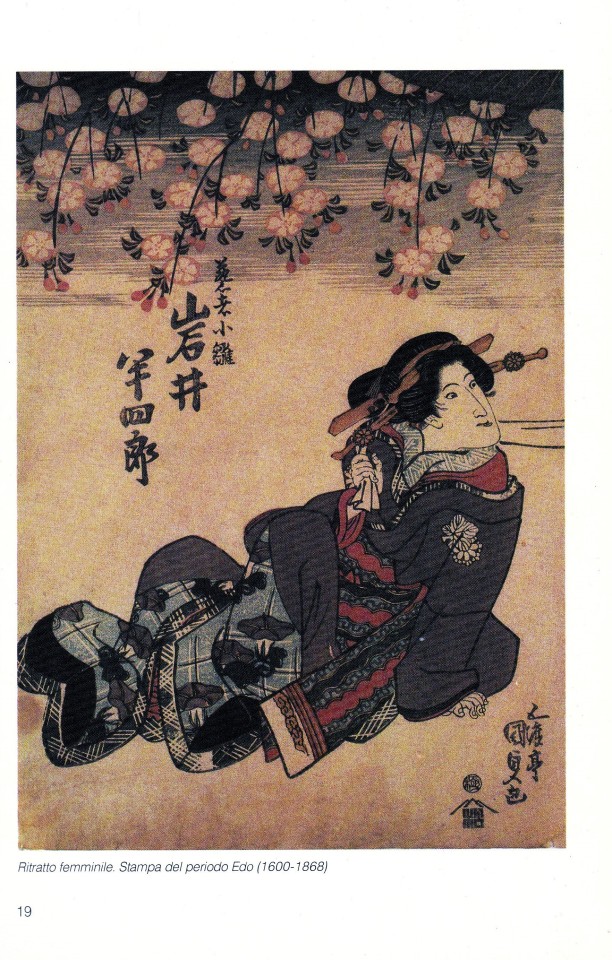
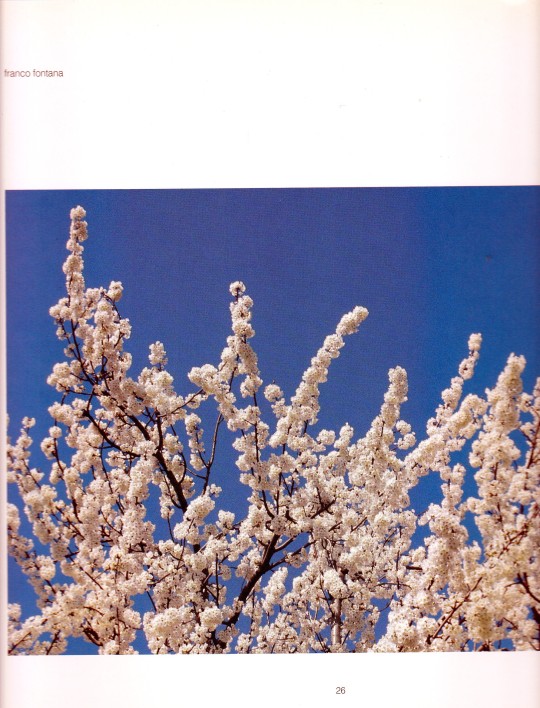
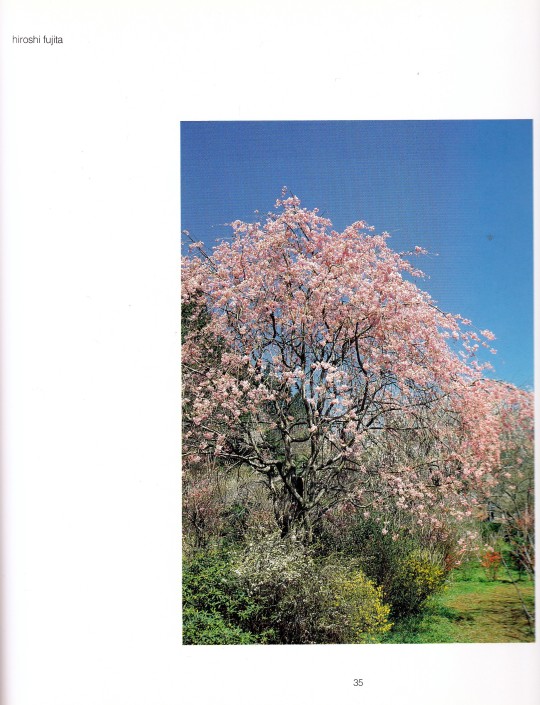
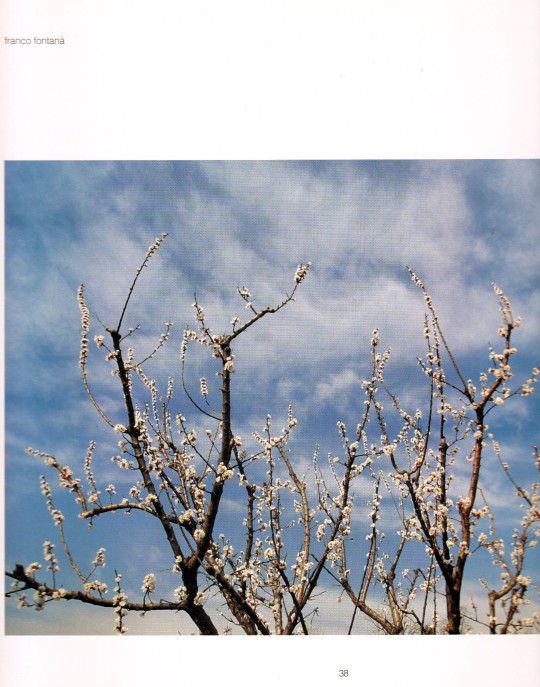
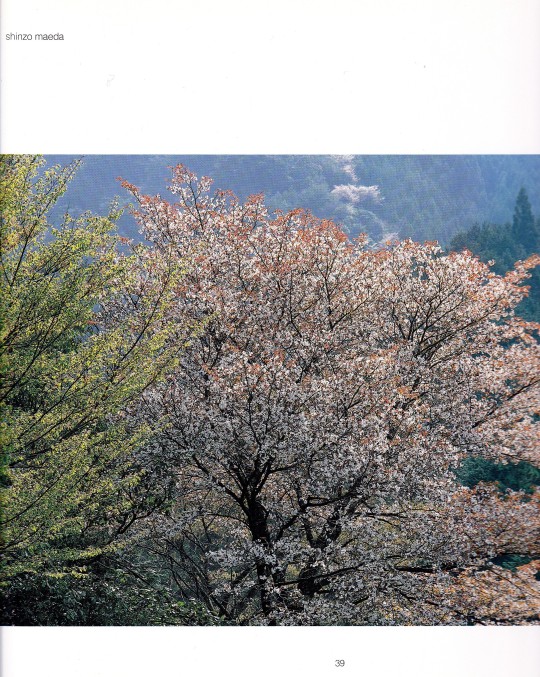
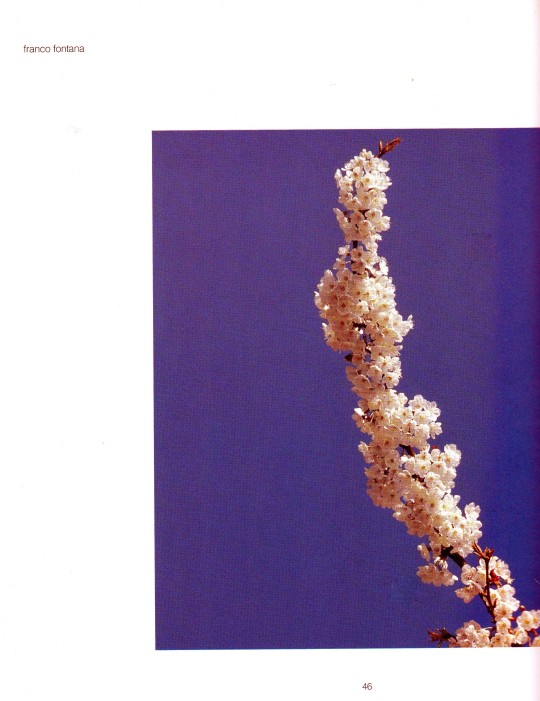


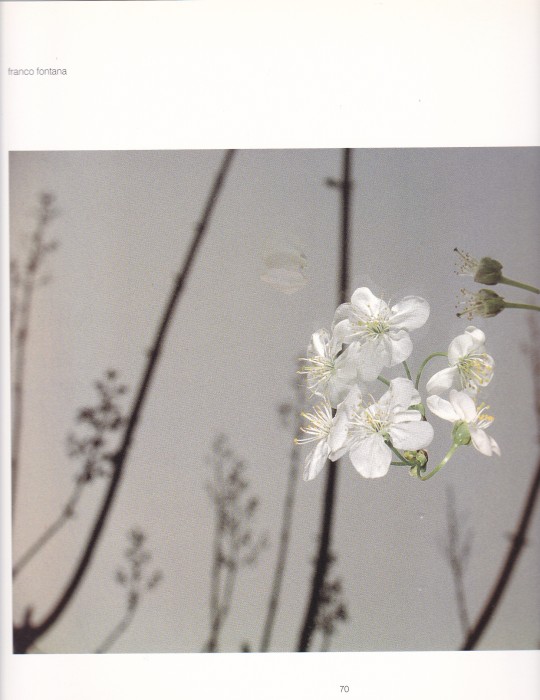
Sakura, sogni paralleli
a cura di Anna Bonometto
testi di Giorgio Celli, Vilma Costantini,
fotografia : Franco Fontana, Shinzo Maeda, Hiroshi Fujita, Fumio Takahashi
art director Francesco D’Avino
Cassa di Risparmio di Vignola, (anni '80), 87 pagine, 30,5 x 30 cm
euro 35,00
email if you want to buy [email protected]
Le riproduzioni delle stampe di epoca Edo sono state gentilmente concesse dal Museo Nazionale d’Arte Orientale di Roma.
Le fotografie della vallata vignolese sono state eseguite da Franco Fontana, quelle giapponesi da Shinzo Maeda, Hiroshi Fujita, Fumio Takahashi.
I testi poetici giapponesi molti dei quali tradotti per la prima volta in italiano, spaziano dall’epoca Nara sino ai giorni nostri e sono stati tratti dalle più importanti raccolte. Alle poesie fanno seguito, a fine testo, note esplicative.

31/01/23
orders to: [email protected]
ordini a: [email protected]
twitter: @fashionbooksmi
instagram: fashionbooksmilano, designbooksmilano tumblr: fashionbooksmilano, designbooksmilano
#Sakura#Franco Fontana#valle di Vignola#colline di Yamato#Shinzo Maeda#Hiroshi Fujita#Fumio Takahashi#stampe epoca Edo#testi poetici giapponesi#photography books#libri fotografia#fashionbooksmilano
7 notes
·
View notes
Text


MITSUBISHI STARION
Technology that is inextricably linked to the Lancer EX Turbo
Leading early Group A races with advanced supercharging technology
The Japanese car that fought best against Eggenberger's Volvo at the Inter TEC. Starion may have such an image. In the All Japan Touring Car Championship, he showed a perfect run from an early stage.
Stability and reliability are the keys to good results A-car that makes it to the ground safely
In the lineup of Mitsubishi Motors, the model developed in 1982 was the Starion, positioned as a high-end sports coupe that was the successor to the Galant (Lambda) and Lancer Celeste.
This model was introduced in the All Japan Touring Car Championship that began in 1985, but Mitsubishi's motorsports activities were originally focused on rally fields rather than circuit races.
This is clearly evidenced by the A53/55 Galant, the Southern Cross Rally with the AR73 Lancer, and even participation in the WRC, which began in the 1970s. Participation in the long-distance rally raid from Paris to Dakar was also seen as part of these rally activities.
However, for other manufacturers, for similar reasons, the most convincing PR activity for a market that was hungry for performance while surviving emissions regulations was motorsport. It was a result of making a decision and stepping into the circuit race at hand.
In this sense, the Mirage Cup, which started the one-make race, is probably the best example. As a category that conveys the glamorous atmosphere of racing, it was one of the races that attracted attention at the time.
On the other hand, in the touring car race of Group A vehicles, the Starion Turbo, which had a proven track record in the North American continent, was brought in. One of the reasons for this was that until then, Mitsubishi had had little to do with domestic races, and that they could not find a suitable car to participate in the newly-started Group A race.
This is also the case with Nissan's Group C cars, which used the proven mechanics of the IMSA series in the form of "reverse imports."
Well, that Stallion is equipped with a G63B type 3-valve SOHC + turbocharger engine. Mitsubishi had accumulated turbocharging technology with the Lancer EX2000 for WRC. The engine type of the Lancer EX2000 Turbo is the 4G63 type (different from the 4G63 type of 4-valve DOHC used in the Lancer Evolution series later. It is the SOHC 2-valve engine that became the prototype of this), and the basic part is Stallion's
Common with the G63B type. Looking back on these circumstances, Mitsubishi had a certain amount of experience and confidence in the basic mechanisms and content that make up the vehicle.
The first Stallion that appeared in such a background was InterTEC in 1985. After that, Akihiko Nakatani, who became the main driver of the Stallion, was combined with M. Liu and Fumio Mutoh to finish 4th overall. Considering that the 1st and 2nd place was the Volvo 240 Turbo and the 3rd place was the BMW 635CS, it was a good result, what happened to the other Japanese cars?
Then, from 1986, Kunimitsu Takahashi and Akihiko Nakatani teamed up to participate in the All Japan Touring Car Championship series on a regular basis. He finished 5th in Round 1 and 3rd in Round 2, and in Round 3 at Tsukuba, he finally won his long-awaited first victory.
At this time, the opponent was Takao Wada/Aguri Suzuki's Skyline RS Turbo, and although they conceded the series championship, they were always on even terms and won the 2nd place in the series. He had become a presence respected by other entrants.
The following year, 1987, they maintained their first-class competitiveness and got off to a great start with two consecutive wins at the opening of West Japan and West Sendai. After that, he continued to lose races due to trouble, but he managed to win the series ranking 3rd place thanks to his savings in the early stages. He has proven that he is still a first class contender.
In 1988, the Skyline fleet changed to the HR31 type, the Sierra RS500 increased, and the Supra entered the war. The SOHC system engine was already severe, and the chassis performance had reached the stage of review.
In terms of results, the 2nd place in the match against Nishi-Sendai was conspicuous, and the number of cases where other division 1 cars fell behind was increasing.
On the other hand, the wide-body GSR-VR (1987) was launched on the market during this period, and the basic performance was slightly improved, but compared to the trend of rival cars, the progress of evolution was not good. He took small strides and eventually withdrew from Group A racing in 1988.
After that, Mitsubishi's motorsports activities shifted to Group A rally cars with turbo 4WD starting with the Galant VR-4, and after the release of the Lancer Evolution series, it became a WRC top contender until it captured the world title.
Even so, in 1986, when the race began in earnest, the Stallion, whose basic design was already outdated, was able to achieve such a good track record. It's nothing but Taka.
At the 1986 Inter TEC, which was the debut race, it was exciting to see the Stallion running fast and make the Volvo team say, "What is that car?"
62 notes
·
View notes
Text
DOOR Japanese '80s stalker horror thriller - free on Tubi
Door is a 1988 horror thriller about a housewife who is terrorised by a visiting salesman. Directed by Banmei Takahashi from a screenplay co-written with Ataru Oikawa. Produced by Kôsuke Kuri. Executive produced by Fumio Takahashi. The Agent 21-Directors Company co-production stars Keiko Takahashi, Daijirô Tsutsumi, Shirô Shimomoto, Takuto Yonezu, Masao Ishida, Hiroshi Noguchi and Yoshihiro…
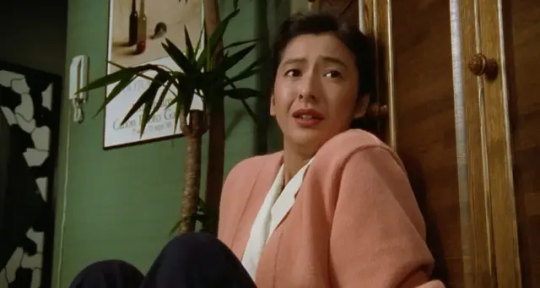
View On WordPress
#1988#Blu-ray#Daijirô Tsutsumi#Door#free on Tubi#free online#horror thriller#Japanese#Keiko Takahashi#review reviews#Shirô Shimomoto#Takuto Yonezu
3 notes
·
View notes
Photo
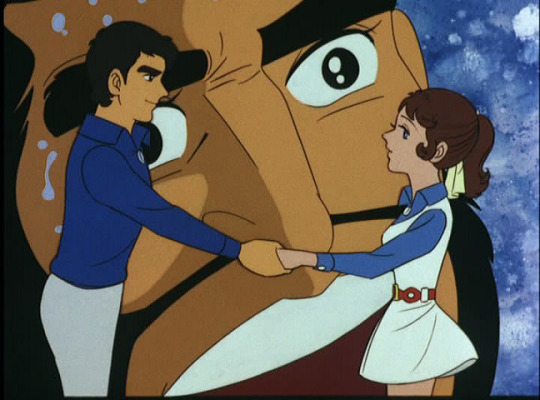
I started re-watching Mahou no Mako-chan from the beginning and I have so many things to talk about. Here’s my commentary for the first thirteen episodes.
Episode 1: This episode has been fansubbed for years, so I won’t get too into it. It’s a beautiful episode written by Masaki Tsuji and directed by Yugo Serikawa. They’ve included music from the Cinderella ballet, which gives the episode a strong Disney-vibe.
Episode 2: This episode is so insane. Mako pretends to have amnesia after being found on the beach by an old zoologist named Mr. Urashima. A TV station does a report on her and a couple shows up claiming to be her real parents. Mako goes along with it since she has nowhere else to go. Surprise, surprise, her “parents” are actually criminals who are just after money.
The man accidentally “kills” Mako, Mako’s real father shows up, revives her, and gives her a gift from her mother: a magic pendant called the Mermaid’s Life. Mako reunites with Mr. Urashima, the criminals come back for Mako and the old man just lets them take her despite her cries for help. As they drive off with her, Mako uses her pendant to brutally murder them in a car crash. Mako goes back to Mr. Urashima like nothing happened, and he basically goes “I heard on the radio those two were actually con artists. Anyway, you can live with me but I’m very strict.” W-O-W. Spoiler: Mr. Urashima is absolutely awful and will continue to do shitty things.
This episode states that Mako’s mother also wanted to become human at some point but didn’t go through with it. I wish they would’ve elaborated on this more, especially since she barely appears in the series.
There’s a minor continuity error: the news report says Urashima found Mako the night before but in the first episode we see he found her in the morning. Also the place Mako was found is called the Sakurasaki Coast (A fictional place as far as I know) but it’s given a completely different name later on in the series.
This is the first episode to feature Shinya Takahashi as an animation director. It looks really nice, though not as good as the first episode.
Episode 3: Mako enrolls at Karatachi Academy, which covers elementary to high school. In this episode we meet her classmates Bancho, Senkichi, Haruko, etc. They all become a big part of the show from here on. The conflict of the episode is about the school’s rich girl, Tomiko Tomida, who brings her mother’s diamond ring to school and loses it. Mako’s new friend Haruko is accused of stealing it. Overall a pretty average episode.
Oh, you know Mako’s signature blue and white outfit? It used to belong to Urashima’s daughter who died at sea. Wowzers.
Episode 4: The twins that live next door, Taro and Jiro, are fed up with their mother’s strict ways and decide to run away. Mako accompanies them, as does their uh... pet bear, Kumagoro. Things escalate when an armed Korean refugee takes Mako and the boys hostage. At one point Kumagoro (who’s usually depicted as sweet and cuddly) viciously mauls the refugee. The episode started out so lighthearted and then got really dark out of nowhere. Also the refugee guy constantly calls Mako a “bitch” which really took me back.
Episode 5: Tomiko has some weird hostility towards Mako and starts spreading rumors about her. During a school trip Tomiko gets so heated, she attempts to drive away in a car and ends up crashing off a cliff. Mako tries to use her pendant to save her but her father just up and blocks her powers. There’s a hilarious scene where Bancho taunts Tomiko as she’s crying, hopelessly stuck on the cliff. Mako ends up rescuing Tomiko thanks to the help of a random guy (who looks like a poorly drawn Akira) driving through.
This is the first episode handled by animation director Fumio Eto. He sucks so bad it’s not even funny. Not only is his drawing style so flat and hideous but his actual animation skills are totally laughable. In his defense, he does tries to do some interesting things but he just doesn’t have the talent for it. Unfortunately he ends up handling the last episode. Sigh.
Episode 6: Follow up to the first episode. The little girl from the cruise ship is suffering from PTSD and is afraid of the ocean. Her father hired Akira to help her feel better. For some reason they changed her name from “Kaoru” to “Naomi.” She’s called Kaoru twice in the first episode and she’s even referred to as Kaoru in the preview for this episode. It’s such a weird error and it really takes away from the episode.
Mako and Akira formally meet. He asks if they’ve met before but she denies it. Towards the end of the episode he directly asks her if she’s “the mermaid who saved his life.” I thought that was funny. In the end, Akira has a falling out with Kaoru’s father and leaves.
First episode to feature Fusahiro Nagaki as an animation director. He previously worked on Himitsu no Akko-chan. This episode looks fine but his art style gets really ugly later down the road.
Episode 7: Mako and Akira meet again. This time he’s working for Tomiko’s family. This episode makes it seem like the previous one didn’t happen? Akira doesn’t remember meeting Mako at all and this time she tries to tell him about what really happened during the shipwreck. It’s very bizarre.
Tomiko has a crush on Akira and gets jealous when he saves Mako from some yakuza guys. There’s this whole subplot about Mako helping a little girl sell flowers while her mother is sick at home. At the end of the episode the thugs come back with a freakin’ pro-boxer who kicks Akira’s ass. Mako saves Akira by using her pendant to uh... freeze the boxer guy. Akira runs off before the yakuza thugs come back and promises to write Mako.
By the way, Mako’s pendant only works if it’s in direct contact with sunlight or moonlight. Nobody ever explicitly tells her this, she just kind of figures it out on her own?
Another episode with Shinya Takahashi as the animation director. Visually, this episode looks great but there are some rough spots in the animation.
Episode 8: Christmas episode. Mako meets St. Nicholas, who believes mankind has lost faith. It's a very “true meaning of Christmas” type of story. There’s a very wild scene at the beginning of the episode where a smoking teenage girl hits on Mako’s father.
Episode 9: This was the first episode I found totally unmemorable. A gang leader from another school writes a love letter to Mako. Bancho gets upset and starts shit with the other guy. Turns out the other gang leader is the son of a yazuka. For some reason Mako is blamed for all of this nonsense and Urashima slaps her for it. Yeah, fuck this episode.
Episode 10: Another stinker. Mako hates the cocky basketball star at her school. Nothing much else to say.
Episode 11: Mako meets a black man named Jim who is falsely accused of theft. This episode deals with racism, discrimination, and police brutality. While it’s far from perfect, it’s impressive an episode like this was produced in Japan around that time. There’s definitely a bit of a white savior narrative behind it, as Mako urges Jim to go to the police to clear his name. Jim refuses saying he doesn’t trust anyone and tells Mako how his innocent friends were all killed by the police. While it’s a bit flawed, it’s still remarkable they were discussing these issues.
There’s a nice scene where Jim and Mako are hanging out that features an instrumental version of Blue Light Yokohama.
Episode 12: Mako visits an old man at a fishing village that’s been horribly polluted by factories nearby.
Unfortunately this is another Fumio Eto episode and it looks especially awful. It’s such a shame because the direction in this episode is brilliant but Eto doesn’t have the skills to do it justice.
There’s a great sequence full of real-life photographs and news articles about the effects of pollution in Japan. I wonder if Hideaki Anno saw this episode growing up?
Episode 13: Mako’s father worries about what his daughter is up to, namely her sex life (I’m not making this up. He doesn’t outright say it but the implication is very clear.) This is a pretty cute episode where Mako and her father have a “date.” They go shopping, swimming and even clubbing.
Mako meets two boys in this episode named Dobin and Chabin. I think they’re named after types of tea kettles? I could be wrong. Amusingly they’re both voiced by actors who play Akira: Osamu Ichikawa and Isao Sakuma.
This is the second episode by the head screenwriter Masaki Tsuji.
Reviews on the next 13 episodes coming soon!
12 notes
·
View notes
Text
Tamotsu Yatō
Tamotsu Yato (矢頭 保, Yatō Tamotsu , 1925(?) – 20 de maio de 1973) foi um fotógrafo japonês e ator ocasional responsável pelo pioneirismo na fotografia homoerótica japonesa e pela criação de imagens icônicas em preto e branco do homem japonês.
Biografia
Yato nasceu em Nishinomiya em 1928 como Tamotsu Takeda. Ele era um fotógrafo autodidata e durante sua vida nunca participou de nenhuma das muitas organizações fotográficas que eram costumeiras no Japão naquela época.
Durante sua vida, ele foi um trabalhador braçal e também trabalhou no teatro Nichigeki.
Tamotsu Yato era amigo e colaborador do escritor Yukio Mishima e do crítico de cinema Donald Richie , bem como um parceiro romântico de longa data de Meredith Weatherby , uma editora americana expatriada e tradutora das obras de Mishima para o inglês. Meredith, que era presidente da editora Weatherhill, comprou para Yato sua primeira câmera, e seus amigos lhe mostraram como usá-la. Yato completou três volumes de fotografia.
No prefácio de sua coleção Otoko de 1972, Tamotsu Yato escreveu:
quando esses jovens estão diante da minha câmera, nunca encontro em sua nudez o menor traço de vulgaridade ou grosseria. Em vez disso, é um momento emocionante que desperta em mim muitas das mesmas emoções que sinto quando vejo uma fruta perfeita recém-saída da árvore, ou uma câmera nova e cara ainda na vitrine.
Embora o trabalho de Yato tenha recebido apenas uma distribuição pública limitada, ele alcançou um culto de seguidores e foi reconhecido como uma grande influência por vários artistas que trabalham com erótica masculina. Assim, Sadao Hasegawa observa em seu Paradise Visions : "Tamotsu Yato alcançou a fama ao criar Otoko, um livro ilustrado. Ele fotografou Yukio Mishima, nu. Seus temas: homens tradicionais, musculosos e pouco sofisticados do campo, estão quase extintos hoje. Otoko era valioso porque você podia ver esses homens de corpo longo, pernas robustas, cabelos curtos e mandíbula quadrada... Adeus, homens do Nippon!"
Tamotsu Yatō morreu dormindo em seu apartamento em Takadanobaba de uma doença cardíaca aos quarenta e cinco anos. Após sua morte, Meredith Weatherby levou seus negativos para a Califórnia. Mais tarde, eles foram para a posse de Fumio Mizuno, que os possui até hoje.
Livros porTamotsu Yato
Taidō: Nihon no bodibirudā-tachi (太道: Japanese Bodybuilders ). Tóquio: Weatherhill, 1966. Versão em inglês: Young Samurai: Bodybuilders of Japan , Nova York: Grove Press, 1967. Com uma introdução de Yukio Mishima .
Hadaka matsuri (裸祭り). Tóquio: Bijutsu Experimental, 1969;: A Photo-Essay , Nova York/Tóquio: John Weatherhill, 1968. Com introdução de Yukio Mishima e ensaios de Tatsuo Hagiwara, Mutsuro Takahashi e Kozo Yamaji. Traduzido e adaptado para leitores ocidentais por Meredith Weatherby e Sachiko Teshima.
Otoko: Photo-Studies of the Young Japanese Male , Los Angeles: Rho-Delta Press, 1972. Dedicado à memória de Yukio Mishima .









Tamotsu Yatō - Otoko (1972)
1K notes
·
View notes
Audio
(2021, Studio Mule, Studio Mule 37)
Beautiful reinterpretation of the 1982 Japanese spiritual jazz classic
21 notes
·
View notes
Photo
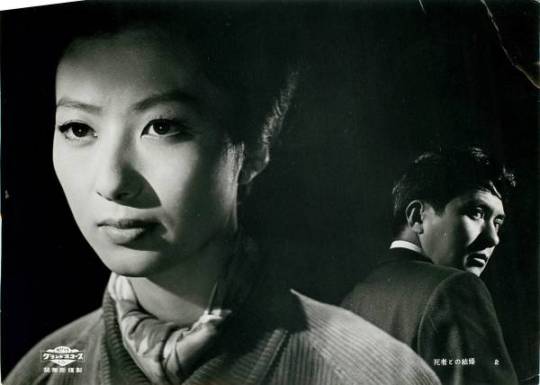
Lobby card for Marriage With The Dead (死者との結婚), 1960, directed by Osamu Takahashi (高橋治) and starring Akiko Koyama (小山明子) and Fumio Watanabe (渡辺文雄).
#Marriage With The Dead#死者との結婚#Shisha To No Kekkon#Osamu Takahashi#高橋治#Akiko Koyama#小山明子#Fumio Watanabe#渡辺文雄#lobby card#Shochiku#japanese movie#japanese film#japanese cinema#classic film#classic japanese film
86 notes
·
View notes
Photo

7月27日〜8月10日にグループ展に参加します。 新作も出しますのでよかったら是非いらしてください! 詳細です↓ RAW and PRIMITIVE 2019 -Term ONE @ THE blank GALLERY, Tokyo @THE blank GALLERY “RAW and PRIMITIVE 2019” 本展では、「プリミ��ィブな表現 (意:primitive = 原始の、太古の、初期の、根源の、未発達な、粗野な) 」をテーマとし、生命的なエネルギーが宿る動物的でストレートな表現から、パンクやダダイズム、ストリートアートにも通ずる荒々しくも生々しい表現まで、現代においても根付く野生感に満ちたアーティストと作品を紹介します。 会期:2019年月7月27日(土) ~8月10日(土) 初日17時よりオープニング ※初日は17時開場となります。 営業時間 平日 weekday 13:00-19:00 土日 weekend 12:00-19:00 休廊日:水曜日 Closed on Wednesday ※最終日は18時まで <Term ONE> ARTISTS ・アオキ kiki コウヘイ ・カノートモカズ TOMOKAZ KANO ・高橋岳人 Gakuto Takahashi ・三津繁郎 Shigeo Mito ・Hell ふみお Hell Fumio ・illbull ・Koji Kobayashi ・Marie Higashi ・Midori Arai ・SAWASASA 会場:THE blank GALLERY 東京都渋谷区神宮前3-21-6 大崎ビル3F http://www.the-blank-gallery.com/ #カノートモカズ #tomokazkano #アート #美術 #芸術 #art #artwork #絵画 #painting #ドローイング #drawing #skech #アクリル画 #acrylicpainting #acrylic #portraitpainting #人物画 #abstractpainting #抽象画 #イラスト #illustration #画家 #artist #japan #exhibition #raw #primitive #theblankgallery https://www.instagram.com/p/Bzt101zHfHk/?igshid=3xy9uthfsxka
#カノートモカズ#tomokazkano#アート#美術#芸術#art#artwork#絵画#painting#ドローイング#drawing#skech#アクリル画#acrylicpainting#acrylic#portraitpainting#人物画#abstractpainting#抽象画#イラスト#illustration#画家#artist#japan#exhibition#raw#primitive#theblankgallery
8 notes
·
View notes
Text
Families praise Unification Church probe as 'step forward,' but question sincerity

▲ Tatsuo Hashida speaking at a press conference
https://mainichi.jp/english/articles/20221018/p2a/00m/0na/011000c
October 18, 2022 (Mainichi Japan)
Family members of followers of the Unification Church and so-called second-generation believers have described Prime Minister Fumio Kishida's recent pledge to launch a probe into the religious group as a "step forward," while stressing that they don't want it to be merely "performative." • During a meeting of the House of Representatives Budget Committee on Oct. 17, Kishida said he took it seriously that relief for those who had suffered because of the religious group had not progressed, and stressed that the investigation into the church's activities needed to proceed firmly. Depending on the results of that investigation, the group, now formally known as the Family Federation of World Peace and Unification, could be ordered to dissolve.
Tatsuo Hashida, a 64-year-old man from Kochi Prefecture whose ex-wife was a Unification Church follower, says his family was destroyed by the large sums she donated to the group. Listening to the proceedings in the Diet, he said the probe was "a step forward," but noted that Kishida didn't provide any specifics on the timing or the outlook for the future. "I didn't feel any energy," he lamented.
According to Hashida, his ex-wife became a follower about 30 years ago. He said that after she was told that there were "evil spirits" in a rice field they owned, they sold it. Then she donated about 100 million yen (about $670,000 at today's rate), including money from the sale, to the Unification Church.
Hashida divorced his wife about 10 years ago. His eldest son, who had stopped attending school at one stage, took his own life at the age of 36. Hashida said he shed tears while observing the Oct. 17 Diet session, and told reporters, "If it weren't for that religion, I think life would have been better. I ended up thinking about my child." Meanwhile, Hashida revealed that on Oct. 16, Hideyuki Teshigawara, head of the Unification Church's reform promotion task force, had come to his home and told him, "I don't want you appearing in front of the media."
Separately, a so-called "second-generation follower" whose parents are apparently Unification Church believers and who goes by the name Miyuki Takahashi said of the Kishida administration's probe, "I appreciate that they decided to respond the way they should, but I don't want it to end up as a performance with just their low approval ratings in mind."
Takahashi has been involved in calls to prevent religious beliefs from being forced on children. Takahashi's parents got married in a Unification Church mass wedding, and donations to the group left the family poor. Moreover, Takahashi was forbidden from dating freely.
The Unification Church came under intense scrutiny in Japan after former Prime Minister Shinzo Abe was fatally shot by the angry relative [son] of a Unification Church member, because he believed Abe was a supporter.
"Since former Prime Minister Shinzo Abe was shot, a long string of the group's problematic activities has been uncovered. Normally, there should have been an investigation right away," Takahashi said, adding that the government "might have changed their position because there was no holding back the public's anger."
At the same time, Takahashi expressed hope that the probe would produce real results, commenting, "When there have been problems in the past, the church has always shifted the blame onto others, saying, 'The followers did this and that of their own accord.' I want them to make it clear that the group has been systematically encouraging illegal acts and human rights violations."
Another 66-year-old woman living in Japan's Kanto region says that she is fighting the Unification Church for the return of a large sum donated by her mother.
"I wonder if the (Kishida) administration can conduct a serious investigation when it continues to appoint ministers whose connections with the group have been exposed," she said. "I want them to think about relief for followers who have lost their assets and their jobs, and eventually request a (court) order for the group to disband."
Fearing destruction of evidence The National Network of Lawyers Against Spiritual Sales on Oct. 17 hailed the probe as "an important step in eliminating damage," but it called for an order for the group's dissolution to be requested quickly, saying, "Exercising the right to question (the group) at this stage will consume time, and there are concerns that the damage will increase in the meantime." Attorney Hiroshi Yamaguchi, a representative of the lawyers' network, commented, "Even if an investigation is conducted, they (the Unification Church) will probably never admit that they are systematically forcing people to make donations. The group has repeatedly tried to 'put out the fire.' It's possible that they will try to conceal evidence or trivialize the facts."
A Unification Church public relations representative commented, "This (investigation) is a first and we're perplexed." They added, "We don't know what will happen next, but if there are requests during the investigation, we would like to respond sincerely." Regarding the request for Hashida not to appear before the media, they said, "It was because there are discrepancies between his and (his ex-wife's) accounts. Our intent was to ask him not to speak one-sidedly."
(Japanese original by Hiroyuki Oba and Shota Harumashi, Tokyo City News Department; and Yuki Noguchi and Saori Moriguchi, Osaka City News Department)
____________________________
Japanese version: https://mainichi.jp/articles/20221018/ddm/041/040/046000c
VIDEO:
「家庭崩壊」「虐待」「自殺」“国からも見捨てられた”旧統一教会の信者家族が語る苦しみ【報道特集10月1日放送】
____________________________
Related Articles
Editorial: Japan government probe of Unification Church must expose truth, spur decisive action
Japan's PM to probe Unification Church amid backlash, 1st such move
Japan lawyers' group requests court order to dissolve Unification Church
Japan police consulted about Unification Church some 200 times in Sept.
Kishida vows help to those financially affected by Unification Church
#Unification Church#The Mainichi#extortion#Sun Myung Moon#Hak Ja Han#Family Federation for World Peace and Unification
0 notes
Text
Japan Association of Travel Agents Chairman Takahashi comments on the decision of the National Travel Allotment and the removal of the cap on the number of visitors to Japan. The industry is united in creating a new era of travel."
Japan Association of Travel Agents Chairman Takahashi comments on the decision of the National Travel Allotment and the removal of the cap on the number of visitors to Japan. The industry is united in creating a new era of travel.”
On September 23, JATA (Japan Association of Travel Agents) Chairman Hiroyuki Takahashi commented on Prime Minister Fumio Kishida’s announcement to implement a nationwide travel discount and remove the daily cap on the number of visitors to Japan. Full text of JATA Chairman Hiroyuki Takahashi’s comments With the announcement of the removal of the cap on the number of visitors to Japan, the…
View On WordPress
0 notes
Photo

I may have misspelled things here and there. Note this is part of a personal Bo7 AU canon where there’s no Shikon Jewel. There’s no dying at the lord’s castle. And no Kagome, Inuyasha, Miroku, Sango, etc, etc, etc...
OH WELL. Let the nonsense few care about BEGIN!
1. Young Ren talking crap to scare off some potential muggers/thieves/murderers/whatever you wanna insert here. He is a bit known in this small area for setting explosives that can be triggered by wire when needed buuuuut sometimes storms suck. (like now) Gin can see straight through the teen’s bullshit.
2. He doesn’t have anxiety and abandonment issues. Stop spouting that nonsense! Actually, sixteen years old and just got cast aside by a hella irritated Gin (for good reason). He’s not handling it well. What’s one more person getting rid of you, right?
3. Just angry. I’m positive it’s at Fumio. You don’t know Fumio. He HATES and will kill Fumio.
4. Gin didn’t need that eye.
5. Sometimes you try and form walls to protect yourself from ridiculous notions like failure and feelings and what not. Gin can still call out his bullshit.
6. Years of forced travel and homelessness will already ruin a good sleep schedule. Combine that with a hyper fixation on projects and plans some nights and you’re looking at 2-3 hours top until he blacks out walking.
7. Most despised trait. Shaves it off the very second he gets to a running body of water where it’s easiest to do so. I mean, it’s annoying and sweaty and itchy and has a habit of catching on fire so what’s the point of growing it out?
I’m done. That’s all I could fit on that page. Digital practice yet again. Who’s next? No one knooooows.... (I do.)
Renkotsu (c) Rumiko Takahashi
#Renkotsu#Ginkotsu#Jakotsu#band of seven#inuyasha things#personal canon#Bo7 AU#Digi Mutt#shichinintai#bandofseven
5 notes
·
View notes
Photo

Let’s have a look at Mahou no Mako-chan episodes 14 to 26!
Episode 14: This episode is absolutely insane. Mako nearly gets run over by Akira, who’s currently a truck driver for the Tomida construction company. He gives her a package and asks if she could deliver it to Tomiko. Mako agrees but is a little sad because she thinks Akira might have feelings for Tomiko. However, it’s revealed the package actually contains all of the letters Tomiko wrote to Akira. He didn’t even open them! Tomiko is beside herself. (I crack up every time I watch this scene. He was so unbelievably shitty for that. I don’t know why but they made Akira such a fuckboy in this episode.)
Tomiko blames all of this on Mako, insisting Akira must be in love her. She starts rumors about Mako and Akira throughout the school which travels into the neighborhood. Urashima gets so pissed he slaps Mako and stops talking to her. Then Mako gets kicked out of school! It’s all so wild. Mako leaves for uh... days (?) looking for Akira to prove her innocence. At one point she runs into Tomiko, who tells her that Akira has committed suicide. Mako believes it at first but then remembers he would never do such a thing. Mako finally finds Akira again, who gives her a flower. The episode ends with Urashima apologizing to Mako for being a total shithead.Total insanity. Is it weird I really like this episode? The way everyone treats Mako is completely horrible but it’s a very entertaining episode.
This episode marks the last time the Tomiko-Akira-Mako love triangle is brought up, which I think is disappointing. Also, this is the last time we see Akira until like... episode 40-something.
Episode 15: Unmemorable episode. Mako meets two men who want to start their own band.
Episode 16: The principal’s daughter, Yuriko, comes back from France with a proposal to enforce expensive uniforms at Karatachi Academy. Mako and her classmates reject the idea. At one point Mako is suspended but still comes to school (as a form of protest). Tomiko snitches on her and Urashima slaps Mako for her disobedience again. God, he sucks so bad. Yuriko and the principal eventually give in after the students continue protesting.
This episode is okay. It’s nice seeing Mako and her friends organize against the school and also support their teacher (he’s put on leave at one point due his students objecting to the uniforms). Urashima continues to be the worst character in the entire series. This is the third time he has hit Mako! Old bastard. Amusingly, Shinya Takahashi handled the animation for the beginning and end of the episode but was not the actual animation director.
Episode 17: The star baseball player of Karatachi Academy, Tsudo, is in poor health and doesn’t have much longer to live. Mako finds out he’s been receiving letters from a mysterious girl named “Yukiko” who he considers his girlfriend. One night Mako claims to be Yukiko to give Tsudo some sort of peace before he dies. But Tsudo knows she’s lying, because Yukiko doesn’t exist. It turns out he’s been writing those letters to himself out of loneliness.
What a twist! I actually really love this episode but Fumio Eto’s godawful animating skills really take away from it. It’s so well written and directed but the visuals just falls flat. They really should’ve had a more talented animator handle this one. Oh well.
Episode 18: Mako meets a boy at the pool and it turns out he works for Tomiko’s family. Tomiko gets jealous and starts shit. Blah, blah, blah. The animation for this episode is really rough looking. Not much else to say.
Episode 19: Mako’s wealthy classmate Miyuki has recently stopped going to school and now hangs out with a motorcycle gang. It turns out her parents have gone bankrupt and left her behind. Mako tries to reason with Miyuki but nothing gets through to her. With nowhere else to go and no family to turn to, Miyuki takes one last motorcycle ride and commits suicide.
This episode starts out pretty light hearted with a subplot about Urashima’s pet monkey, Kiiko, sneaking off to play with Miyuki and then it turns into a serious teen drama. The ending still takes me back every time I watch it.
Episode 20: Oh boy, was this a stinker. Taro and Jiro’s aunt wants to be a flight attendant because the man she loves is a pilot. HOWEVER! She has bad eyesight and “can never be a flight attendant.” Lol What? Do you really need perfect eye-sight to be a flight attendant?
Episode 21: The school janitor's daughter is visiting from Brazil. There’s only one problem: he’s been lying to her, claiming to be the principal of Karatachi Academy. Mako and her friends convince the real principal to keep the lie going for his daughter’s visit.
This episode isn’t great. There isn’t much conflict until the very end, when Tomiko’s mother nearly outs the janitor. It’s actually a pretty boring episode. Also what kind of morals are they trying to teach here?
Episode 22: Mako receives a letter from an unknown sender that turns out to be a funeral invitation. The letter was actually from a mysterious boy wants Mako’s help with protecting a large cedar tree. A construction crew has been destroying the forest and they’re planning on taking down the cedar tree next.
The boy is later revealed to be the fairy of the forest and knew that Mako was a mermaid who had a magical pendant. They get into an interesting argument about trusting mankind and Mako ends up lending him her pendant. Unfortunately it doesn’t help and the construction crew cuts down the tree. The fairy disappears and leaves behind Mako’s pendant.
I absolutely love this episode. Visually, it’s just downright gorgeous. The backgrounds of the countryside are beautifully done and Shinya Takahashi’s character animation is top notch here. Yoshinori Kanada even did some key animation for this episode. This is also probably one of the few episodes where Taro and Jiro aren’t annoying or feel shoehorned in.
It was cool seeing Mako interact with another supernatural being, something that unfortunately doesn’t happen again until the end of the series. I also really liked that the fairy was depicted as some random bug-eyed little boy.
Episode 23: Twin hi-jinks! Mako meets a girl named Minori who looks almost exactly like her. Minori’s grandfather is arranging for her to get married but she only wants to be with a mysterious man who saved her little sister’s life sometime ago. Mako sympathizes with Minori and offers to help her out.
This episode is cute. Mako brings up Akira again, which is refreshing. Continuity! Yay! Fumio Eto handled this episode, so it looks like shitty but not as shitty as usual. That’s a good sign, right?
Episode 24: Mako’s school needs a copy of her family’s registry, but she obviously doesn’t have one. Things take a super dramatic turn when Tomiko’s mother suggests sending Mako off to a specialist so she can cure her “amnesia.” Mako’s father eventually pops in and saves the day.
I had a bit of a problem understanding this episode, but at one point Bancho and his friend attempt arson? I think they were trying to destroy some official documents to help Mako out. I’m not sure.
Also at one point Bancho mentions having an older sister. She never appears in the series but gets brought up again in a later episode. Just something I thought was worth mentioning. Personally, I wish she would’ve made a formal appearance.
Episode 25: Mako, Taro, Jiro, Kumagoro and a young boy must find a new home for a group of monkeys whose natural habitat is threatened. Not much to say about this one. It drags on and there’s not even a real conclusion. Boring.
Episode 26: Prince Hans of Escalia is smitten by Mako and insists on spending the day with her. There are a lot of funny shenanigans here, with Mako’s father and the old sea crone worrying about Mako’s lack of etiquette. This episode is a typical “Roman Holiday” type of story but it’s cute! Hans speaks German and teaches Mako some words and sayings throughout their date. One phrase he can bring himself to translate is “Ich liebe dich.”
There’s a lot of fun animation techniques used here. Definitely a must-see episode.
6 notes
·
View notes
Text
Ancient Technologies - 21st February 2017
https://www.mixcloud.com/Resonance/ancient-technologies-21st-february-2017/

Ancient Technologies - February 23rd, 2017
Text - The Emerald Tablets of Thoth the Atlantean - circa approx. 50,000 B.C.
Artist - Track
Ryo Kawasaki - Hawaiian Canavan
Band Of Bees - I Love You
Fumio Miyashita - In The Beginning
Sensations Fix - Strange About Your Hands
Yukihiro Takahashi - Something in the Air
Erasmus - Ti Ricordi Di Me
Alessandro Alessandroni - Swinging Whistle
Supersempfft - Out of Time
Royal Flush - Goddess Of Love
S I M P S O N W A V E - When Will I See You Again
R Hill & D Mackay - Placid
John Jacob Niles - Go 'Way From My Window
Bill Wyman - (Si, Si) Je Suis Un Rock Star
Benjamin Ball - Flash a Flashlight
Tenth Planet - Moon Sign Version II
Marie Davidson - Exces De Vitesse
Barış K - 200
Death In June - The Calling (MK II)
#Ancient Technologies#The Emerald Tablets of Thoth#Thoth#Magick#Resonance FM#Resonance 104.4FM#Tim Zercie#Esoteric#Hermetic#Hermetic Arts#Occult#Atlantis#Egyptian
1 note
·
View note
Text
My WVUD playlist, 7/17/2017
Dave Soldier "Barcarolle (feat. Sahoko Sato Timpone)" Dave Soldier "Ra Dances with Rams (feat. Marshall Allen)" Jeff Mills & Orquestra Sinfónica do Porto Casa da Música "Loop Transit 5" Jeff Mills & Orquestra Sinfónica do Porto Casa da Música "Saturn" Andromeda Mega Express Orchestra "J Schleia" Francesco Tristano, Deutsches Kammerorchester Berlin & Pascal Schumacher "Neihou (Live)" Dwight Trible "Heaven & Hell" Nucleus & Leon Thomas "One (live)" Sam Watts "The Kite" Dizrhythmia "Heal Me, I'm a Trustee" Ruby Rushton "Moonlight Woman" Indigo Jam Unit "Commons&Sense" Afro Begue "Mbakh dou Mbakh" Kuniyuki Takahashi "First Experience (feat. Fumio Itabashi)" Bokanté "O La" Les Amazones d'Afrique "Doona (feat. Mamani Keita)" Jazzpospolita "Istota (Live)"
0 notes
Text
Anime Matsuri 2017 News
Originally posted on our FB page on February 9, 2017
For those moonies attending or planning to attend Anime Matsuri 2017 (AM XI) here is another amazing update on the Sailor Moon events happening there. Anime Matsuri will be the weekend of April 7-9, 2017 in Houston, TX at the George R Brown Convention Center. For more details- http://www.animematsuri.com/ .
Moonie related guests so far- ~Christine Cabanos- Sailor Saturn in Sailor Moon (Viz Media) ~Cristina Vee- Sailor Mars in Sailor Moon (Viz Media) ~Fumio Osano, nicknamed Osabu and Osa-P by Sailor Moon Creator Naoko Takeuchi, is a manga editor who works for Kodansha LTD. ~Pretty Guardian Sailor Moon: The Musical Cast: Hotaru Nomoto (Sailor Moon), Yume Takeuchi (Sailor Mercury), Karen Kobayashi (Sailor Mars), Kaede (Sailor Jupiter), Rimo Hasegawa (Sailor Venus), Syu Shiotsuki (Sailor Uranus), Sayaka Fujioka (Sailor Neptune), Mikako Ishii (Sailor Pluto), Karin Takahashi (Sailor Saturn), Dancers: Risa Kawamura, Yoshimi Hidano, Ayano Nagasawa, Ayumi Sagisaka and Yuga Yamato (Tuxedo Mask)
Moonies attending feel free to share your stories and photos from this special event! Enjoy!
https://www.facebook.com/AnimeMatsuri/photos/a.297626805651.316714.197694645651/10158209048195652/?type=3
0 notes